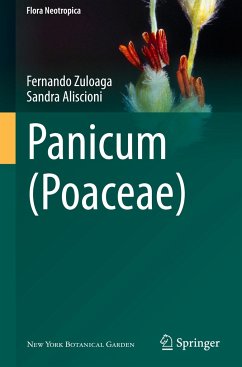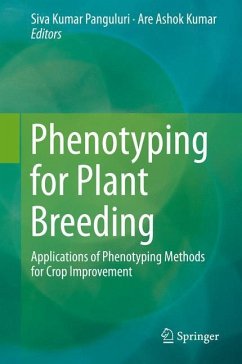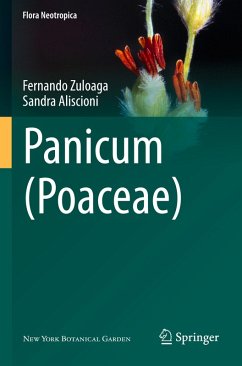
Plant Ecological Anatomy
Versandkostenfrei!
Erscheint vorauss. 6. Oktober 2025
82,99 €
inkl. MwSt.

PAYBACK Punkte
41 °P sammeln!
This book, "Plant Ecological Anatomy," offers a groundbreaking exploration of plant anatomy through the lens of ecological adaptation, addressing the pressing challenges posed by climate change. Moving beyond traditional descriptive anatomy, this volume provides a comprehensive understanding of how plants structurally adapt to diverse ecological factors, thus describing ecological groups of plants as: hydrophytes, helophytes, xerophytes (as a large group and with their sub-groups as well: halophytes, alpine plants, tropical alpine plants, steppe plants, desert plants, epiphytes) and mangroves,...
This book, "Plant Ecological Anatomy," offers a groundbreaking exploration of plant anatomy through the lens of ecological adaptation, addressing the pressing challenges posed by climate change. Moving beyond traditional descriptive anatomy, this volume provides a comprehensive understanding of how plants structurally adapt to diverse ecological factors, thus describing ecological groups of plants as: hydrophytes, helophytes, xerophytes (as a large group and with their sub-groups as well: halophytes, alpine plants, tropical alpine plants, steppe plants, desert plants, epiphytes) and mangroves, under environmental stressors like aridification and salinization, and waterlogging.
Key concepts include the primary and secondary structures of roots and stems, structural anomalies, and the architectural patterns of leaves. The book delves into the ecological anatomy of vegetative organs, highlighting the unique adaptations of various ecological groups of plants. For instance,it examines, among many others, the development of aerenchyma in hydrophytes, the specialized root structures in mangroves, and the water storage tissues in xerophytes. With over 500 illustrations, including 60 color figures, readers gain a vivid understanding of these complex structures.
"Plant Ecological Anatomy" is an essential resource for researchers, scholars, and students in plant sciences, ecology, and environmental studies. Its extensive bibliographic references connect readers to both classic and contemporary literature, making it a vital addition to any academic library. This book is a must-read for anyone seeking to understand the intricate relationship between plant structure and ecological adaptation.
Key concepts include the primary and secondary structures of roots and stems, structural anomalies, and the architectural patterns of leaves. The book delves into the ecological anatomy of vegetative organs, highlighting the unique adaptations of various ecological groups of plants. For instance,it examines, among many others, the development of aerenchyma in hydrophytes, the specialized root structures in mangroves, and the water storage tissues in xerophytes. With over 500 illustrations, including 60 color figures, readers gain a vivid understanding of these complex structures.
"Plant Ecological Anatomy" is an essential resource for researchers, scholars, and students in plant sciences, ecology, and environmental studies. Its extensive bibliographic references connect readers to both classic and contemporary literature, making it a vital addition to any academic library. This book is a must-read for anyone seeking to understand the intricate relationship between plant structure and ecological adaptation.












